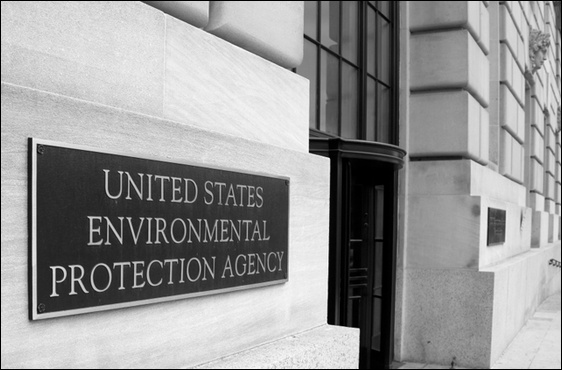
Origin and History of the EPA National Headquarters Office Professionals Union, NTEU 280
NTEU is the National Treasury Employees Union ; EPA is the United States Environmental Protection Agency; NTEU Chapter 280 represents all professional employees at the headquarters offices of the U.S. Environmental Protection Agency. This includes scientists, attorneys, engineers, librarians, economists, and others.
OFFICIAL HISTORY OF NTEU CHAPTER 280
20 YEARS OF PUBLIC SERVICE AT EPA HEADQUARTERS
This history is organized in the following sections, which the reader may find useful in searching for specific information: Introduction, Organizing the Union, The Asbestos Regulations Battle, Fluoride and Professional Ethics, Toxic Carpet and Indoor Air Quality, Flammable Aerosol Propellants, Asbestos in Our Workplace, EPA Attempts to Bust the Union, Collective Bargaining, Executive Order 12871 and Partnership, From NFFE through EECO to NTEU, Public Recognition, and Our Philosophy of Civil Service.
An historical listing of union officers follows this narrative.
Introduction: What follows is a largely chronological narrative of the development and accomplishments of our union. The final section of the narrative is titled “Our Philosophy of Civil Service. That section explains how the various “non-traditional” actions of this labor union, which are depicted in earlier sections, fit together in a coherent pattern consistent with that philosophy. The reader should understand, however, that the union did not have a “Philosophy of Civil Service” document at its inception, all neatly thought out and rationalized, ready to use as our fundamental guide to action. Rather, the philosophy developed and evolved in the heat of the battles recounted here.
Organizing the Union: What we did have as our early guide was a vision and a belief. We believed that to be able to perform our work in support of EPA’s mission in an open, ethical and public-spirited environment was a basic working conditions issue for which we would take risks and fight. We had a vision of EPA workers coming together in a democratic organization and interacting with management, Congress and the public in ways that enhanced EPA workers’ job satisfaction and the Agency’s ability to accomplish its mission.
The National Treasury Employees Union uses as an organizing concept the idea that all Federal employees should be treated with dignity and respect. In retrospect, this organizing concept summarizes our early vision and belief very well.
Organizing the Union In 1981, with the advent of an Administration expected to be hostile to both labor and environmental regulation, a group of us worried EPA professional employees came together and started talking organization. Concerned toxicologists, chemists, biologists, attorneys and other environmental professionals looked in alarm at impending changes at EPA – an Administrator, Anne Gorsuch, who had never supervised more than a couple of dozen employees in a Colorado telephone company and senior officials who were on record opposing the Agency’s mission.
Many of us had backgrounds in environmental, political, and labor activism. We quickly concurred that EPA’s ability and future willingness to accomplish the mission Congress had set before it was in danger, and that EPA workers of all kinds were likely to be put on the street.
We took it as our responsibility to protect EPA’s work force and mission as best we could under the circumstances. What could we do to maintain professional standards and jobs and environmental protection?
We considered forming a professional association. Such a group could promote professionalism by sponsoring seminars and encouraging publication of scientific papers, be a focal point for contacts with outside allies, and serve as a support group for workers threatened in one way or another by the new management team.
With some research we soon found what a professional association could not do. It could not compel management to recognize such a group formally as the representative of EPA professionals, nor to bargain over working conditions, nor to negotiate a grievance process. It could not force arbitration to resolve disputes, nor get official time (i.e. time off from work duties), facilities or services from EPA to do anything at all. A labor union, however, could do all of these things, and we decided to organize a union.
Some years before, EPA professionals had voted against joining a union when other EPA Headquarters workers organized American Federation of Government Employees Local 3331. Though we weren’t part of Local 3331’s bargaining unit, many of us professionals with family or other links to organized labor had joined that union anyway. Many of the professional workers who led the drive to create the professional’s union came out of Local 3331’s ranks as members or officers.
With which national union, if any, we should affiliate was an important question. We planned to be a union with both traditional and non-traditional aims. We wanted freedom to pursue goals that were outside the traditional labor union scope – professional ethics and professional development, encouraging sound science for EPA policy decisions, etc.
We also would be competing with defense-related programs for federal resources, so we were strongly attracted to the National Treasury Employees Union, which did not represent Defense Department employees. But NTEU was highly centralized, and we thought our need for autonomy would clash with that union’s method of operation. Nor did we want to be the “little brother” to an already existing union at EPA Headquarters, AFGE Local 3331.
After considering our options, we decided that the National Federation of Federal Employees would provide the freedom we desired and that we could live within a national union that included Defense employees.
In 1983, Local 2050 of the National Federation of Federal Employees was chartered as the professionals’ union at EPA Headquarters. In 1984 we petitioned for a representational election, and by a 90 percent majority Local 2050 was elected by the professional bargaining unit members to be their exclusive representative. (Our switch to affiliation with NTEU is covered below.)
It wasn’t long before the first test of our commitment to EPA’s mission came along. It involved asbestos.
The Asbestos Regulations Battle: By mid-1984, EPA’s decade-long effort to regulate asbestos risks had culminated in a draft Rule under section 6 of the Toxic Substances Control Act (TSCA). The Rule, that would ban several big uses of asbestos and require a phase-down of asbestos mining and imports, cleared all levels of EPA review, including review by the General Counsel who opined that TSCA section 6 was the appropriate authority for controlling asbestos risks and that section 9 of TSCA, which might have required EPA to let the Consumer Product Safety Commission (CPSC) and the Occupational Safety and Health Administration (OSHA) handle the job, did not apply in this case.
The asbestos Ban/Phasedown Rule went to the Office of Management and Budget for clearance in the late summer of 1984, and disappeared into a Black Hole. It re-emerged in February 1985 at a press conference called by EPA’s new Acting Administrator, Jim Barnes (Bill Ruckelshaus having presciently resigned just days before) and the General Counsel, Gerald Yamada.
These officials told an incredulous audience that included a Local 2050 Vice-President, that EPA had suddenly discovered that TSCA section 9, after all, did require EPA to withdraw its proposed Ban/Phasedown Rule and instead let OSHA and CPSC try to control asbestos risks.
The Branch Chief whose organization had written the Ban/Phasedown Rule and invested years of work that included consultaion with OSHA and CPSC over which agency’s authority could best control asbestos risks, was outraged by the announcement. He demanded to know what the union was going to do about it.
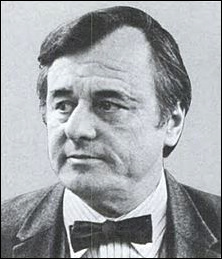
That evening we contacted Bob Eckhardt, Congressional “father” of TSCA and RCRA, and two days later a letter was on the Administrator’s desk stopping the section 9 referral to OSHA and CPSC and starting an investigation.
Congress found that OMB had secretly met with asbestos industry people and had agreed to their demand that EPA’s Ban/Phasedown Rule be killed. EPA was then ordered by the Administration, through OMB, to fabricate the story about TSCA section 9 taking precedence and requiring OSHA and CPSC, rather than EPA, to deal with asbestos.
After issuing a severe public criticism of OMB’s and EPA’s actions, Congress demanded and got a Memorandum of Understanding (MOU) between EPA and OMB that specified that there would be no future secret meetings between OMB and parties with an interest in proposed EPA Rules and that EPA would be invited to all meetings between OMB and interested parties. The MOU was published in the Federal Register. Local 2050 was justifiably proud of its part in this saga.
Fluoride and Professional Ethics: As that battle was raging, another one was in the making. While EPA was engaged in revising its drinking water standard for fluoride in 1985, an employee came to the union with a complaint. He said he was being forced to write into the regulation a statement that offended his sense of professional ethics.
The statement was to the effect that EPA thought it was alright for children to have “funky teeth” (as he put it) i.e., severe dental fluorosis. It was OK, EPA said, because that condition was only a cosmetic effect, not an adverse health effect.
The reason for this EPA position was that it was under political pressure to set its health-based standard for fluoride at 4 mg/liter. At that level, EPA knew that a significant number of children develop moderate to severe dental fluorosis, but since it had deemed the effect as only cosmetic, EPA didn’t have to set its health-based standard at a lower level to prevent it.
We tried to settle this ethics issue quietly, within the family, but EPA was unable or unwilling to resist external political pressure, and we took the fight public with a union amicus curiae brief in a 1986 lawsuit filed against EPA by the Natural Resources Defense Council. The more union scientists looked into the fluoride issue, the darker it got.
For example, we uncovered a letter from the Deputy Assistant Administrator for Water telling a citizen that EPA views the use of hydrofluosilicic acid to fluoridate water supplies as “an ideal solution to a long standing problem. By recovering by-product fluosilicic (sic) acid from fertilizer manufacturing, water and air pollution are minimized…”
In other words, this stuff that would be considered a pollutant if it got into the air or dumped into a river, is OK as long as it is dumped straight into a drinking water reservoir. The solution to pollution is dilution, according to this official. Thus EPA turns a toxic waste whose disposal would cost the fertilizer industry many millions of dollars into a pure profit item for industry worth many millions of dollars.
In May, 1992, EPA fired the Office of Drinking Water’s chief toxicologist [Dr. William Marcus], who also was our local union’s Treasurer at the time, for refusing to remain silent on the fluoride cancer risk issue. This occurred following publication in 1991 of a National Toxicology Program bioassay of sodium fluoride that showed male rats got bone cancer after dosing with fluoride at levels only about one hundred-fold greater than the public receives.
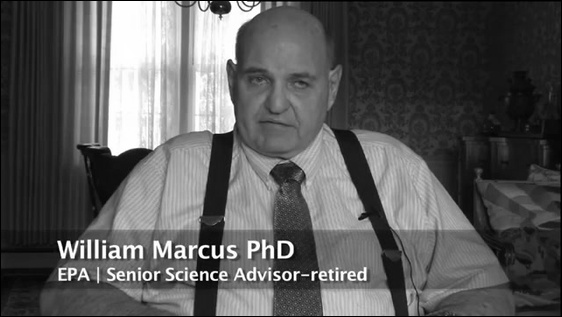
The judge who heard the lawsuit brought against EPA over the firing made the finding that EPA fired the toxicologist over his fluoride work, and not for the phony reason put forward by EPA management at his dismissal. He won his lawsuit and was put back on the payroll at EPA in 1994, with back pay and a $50,000 damage award, but only after the Agency was forced to do so by the Secretary of Labor and public embarrassment.
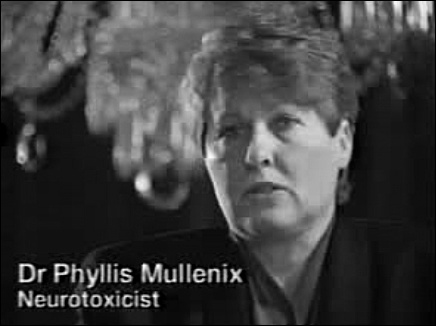
In 1997, the union was asked to write a support letter, outlining our past involvement with the fluoride issue, for Dr. Phyllis Mullenix, a neurotoxicologist, who was suing her former employer for firing her because she published a paper on the neurotoxicity of sodium fluoride. This we did.
That letter came to the attention of some California citizens. They then asked the union to endorse the Californians For Safe Drinking Water ballot initiative aiming to keep fluoride out of that State’s water supplies.
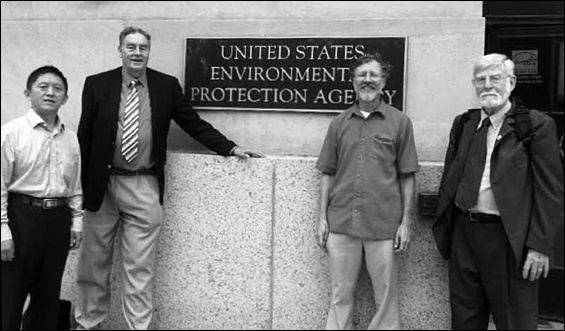
Before calling for a vote of its members on this request, the union arranged a seminar by Prof. Paul Connett of St. Lawrence University and Dr. Bob Carton, our former Local President, covering toxicity data published in the mid and late 1990’s. Based on the seminar and the preponderance of other adverse information on fluoride of which we had become aware since 1985, we voted unanimously to endorse the California initiative.
We published a White Paper in May 1999 on the subject of fluoride toxicity and water fluoridation that is now on the Internet. Two scientists from the Office of Pollution Prevention and Toxics, who happen also to be union officers, sent a memo to EPA’s Children’s Health Protection work group on neurotoxicity hazards that could be experienced by children from fluoride, based on recent studies (never receiving the courtesy of an acknowledgment of that memo). We have asked EPA to supply non-fluoridated water to its Headquarters employees, and we have been responding to inquiries from the public, press and government officials who want to know about the union’s stand on this issue.
We also worked through 1999 and into 2000 with Congressional Committees as they began to inquire into this issue.
In June 2000, the union was invited to testify before the U.S. Senate Environment and Public Works Subcommittee on Fisheries, Wildlife and Water. In our testimony we called attention to the vast amount of adverse information on fluoridation that has accumulated since Congress last studied the issue and called for a national moratorium on the practice pending anepidemiology study. The epidemiology study would use childhood dental fluorosis as the index of exposure and behavioral problems and bone pathology as the effects of concern. We also called for an independent review of cancer slides from the 1991 National Toxicology Program bioassay on sodium fluoride, for chronic toxicity testing of hydrofluosilicic acid, and for a full Congressional hearing on fluoridation. Citizen groups around the country also are petitioning Congress for a hearing, the last previous one having been held in 1977.
Toxic Carpet and Indoor Air Quality: In July 1987, after putting up with years of poor indoor air quality in EPA work spaces, the union negotiated a landmark Clean Air Agreement with EPA. The agreement, since copied by many other federal unions, called for limiting sources of indoor air pollution and for controlling related risks.
Within months of the agreement’s signing, hundreds of EPA employees were made sick by new carpet installed in Headquarters buildings. Scores acquired Multiple Chemical Sensitivity (MCS), a disease in which people become increasingly sensitive to lower and lower levels of an increasing variety of chemicals, experiencing a range of respiratory, neurologic, and other impairments.
Eventually, some found it virtually impossible to function in many environments. This happened to EPA employees who had no previous significant health problems of any kind.
The Director of EPA’s Health and Safety Division, David Weitzman, admitted in a September 1989 Washington Times article that “The freshly manufactured carpet clearly caused the initial illness.” That was something the union had pointed out and had begun to take action on as soon as employees started getting sick, almost two years prior to Weitzman’s admission.
During those two years of struggle, EPA continued to pretend that it couldn’t say for sure what had caused the problems, admitting to the union President, however, that the reason for playing dumb was to “avoid getting involved in lawsuits.” EPA also downplayed the occurrence of MCS among its employees, claiming that these employees only thought they were getting sick from carpet emissions.
During that two year period, as the union made its fight over toxic carpet a matter of public record through various national and international media and the Congress (See Hirzy testimony to Senate Government Operations Committee), it received hundreds of phone calls and letters from citizens reporting similar incidents in their homes, work places and children’s schools. Many of these included heart-rending reports of induction of MCS, mimicking EPA employees’ experience.
Within six months of the first employee illnesses, union scientists had developed an investigative and risk control strategy to deal with bad quality carpet and tried to get EPA to use it, but with no perceptible success. EPA fobbed off the major part of the task to CPSC, which in turn developed its own “investigative” process.
The union President happened to be the Senior Scientist in the EPA Branch that was working with CPSC on the project. When he found that only $5000 had been allotted by the U.S. Government to conduct a nationwide investigation of citizens’ reports of carpet toxicity, and that EPA refused to use data it had collected on sick employees and emissions from the carpet out of fear of involvement in lawsuits, he wrote a memo to his boss decrying those ethical failures.
It was apparent that EPA and CPSC were far more interested in causing no inconvenience to the carpet industry than in protecting the public from harm caused by bad product.
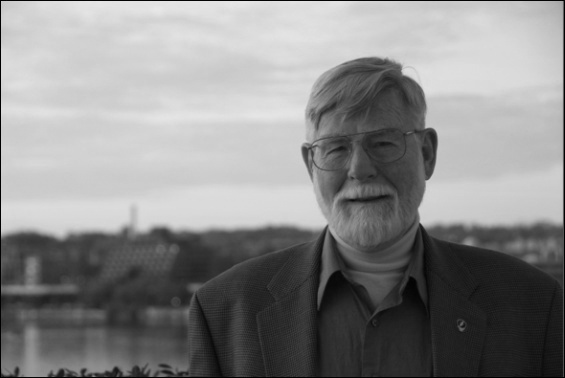
So the union took unique action – in January 1990 it filed a citizens’ petition under TSCA section 21 asking EPA to take specific regulatory actions to protect the public from the kind of injuries its own employees had suffered in their EPA offices. Here was a group of EPA scientists, whose jobs included assessing hazards, exposures and risks from toxic chemicals, writing a detailed justification and plan for EPA action to control risks from carpet emissions and compelling a response.
EPA declined to take on the carpet industry (and also probably the then-extant White House Council On Competitiveness) by granting any of the relief sought in the union’s petition.
An EPA official came to the union President’s office in April 1990 and told him that if it were to grant the relief, “It could cost the carpet industry billions of dollars.” The reason for that being that if EPA were to make the finding of “unreasonable risk” that was necessary for EPA to take action, tort claims against carpet manufacturers would quickly flood the court system.
So, instead of making the “unreasonable risk” finding and granting the relief, EPA proposed creating a “Carpet Policy Dialogue,” which was to be charged with investigating carpet emissions and ways of controlling them. EPA invited the union to sit as a member of the Dialogue panel with about 25 other entities that included the Carpet and Rug Institute (CRI), chemical companies, other Federal agencies, and independent experts.
The Dialogue, begun in August 1990, proved in the end to be just another smoke screen for the carpet industry, and EPA abandoned the charge to the Dialogue to look for ways to control emissions. The carpet industry morphed the Dialogue into a marketing gimmick by mid 1992, eventually developing out of it what the industry called its “Green Tag” program.
The “Green Tag” program required carpet manufacturers to test one square foot of a carpet type per year for total emissions. If that single, one square foot sample passed the test, the entire year’s run of that carpet type was entitled to a “Green Tag”, which CRI said would, “tell consumers that the carpet or rug they buy meets the predetermined indoor air quality testing criteria.”
Anyone with a modicum of experience in quality control could see that testing a one square foot sample, once a year, could not possibly be an adequate method of assuring product quality, as claimed by CRI. The union filed a complaint with the Federal Trade Commission in September 1992 over that CRI program, and in Congress there were subsequent demands that CRI abandon this advertising campaign.
In a September 1996 Louisiana tort action, the judge awarded $4.2 million to a consumer injured by carpet emissions who relied on television advertisements, that the Court found, “. . .do lead the viewer to believe. . .” that the carpet is warranted as safe.
As injuries to employees became evident, the union engaged management and the Department of Labor in several ways. We got a briefing on Workmen’s Compensation processes for Headquarters employees and sought assistance from OSHA (who found, not surprisingly, that no existing indoor air quality standards were being violated at EPA).
We got management to stop installing any more of the toxic carpet, and eventually to sign an agreement not to use any carpet containing styrene-butadiene (SB) latex at Headquarters and to remove all such carpet that had been installed.
We won the right for employees to vote on what kind of new floor coverings they wanted in their work space and we conducted elections in many work units on this question.
We got the four part health and environmental quality study run and results published. We fought back management’s contentions that employees were not physically sick from carpet emissions, and we testified several times before Congress on the carpet problem and on indoor air quality in general, supporting an Administration plea for $8 million to improve air quality here.
The union worked with several law firms who were candidates to help injured employees seek redress that was slow or not forthcoming through other avenues. When EPA employees acquired MCS from the air quality at EPA, the union pushed management into allowing them to work at alternative locations, including their homes, as a last resort. A collective bargaining agreement was reached on the subject, and is now in effect.
Flammable Aerosol Propellents: In 1978 EPA banned the use of chlorofluorocarbon (CFCs) propellents for use in aerosol pesticides. Similar bans were also placed upon other consumer product aerosols by CPSC and FDA. Nonflammable CFCs were soon replaced by aerosol propellants containing extremely flammable hydrocarbons such as propane and butane.
At that time a scientist in the pesticide Registration Division discovered a loophole in pesticide regulations that allowed these flammable/explosive products to be sold without any warnings. Initial memos from the scientist outlining this lapse in protection of the public were ignored by management.
As his memos escalated, management opined that although there was “potential,” no explosions or fires were actually occurring. The scientist then produced hundreds of news-clippings and reports of fires/explosions from CPSC, but management still insisted the problem was not pervasive enough to warrant a flammability warning.
The scientist contacted our union and the New York City Fire Department, which had documented a large number of fires from insecticide foggers. In 1987, nearly 10 years after the discovery of the loophole, a notice was prepared requiring warnings on all propane/butane containing pesticide products. The notice was withdrawn by EPA that same year, with the understanding that industry would work with EPA to develop appropriate language.
Meanwhile, with the intent of firing the whistle-blowing scientist for non-performance, management reassigned him to a different job in a discipline in which he had no training. His requests for training were all refused, including free training at USDA, based upon a phony excuse of no training funds. After two years of grievances and a whistle-blower case with the Office of Special Council, the scientist settled with the Agency, and in the meantime had become a full time officer with the Union.
Twenty one years after its discovery by this scientist, the loophole was finally closed, but only in regard to total release insecticide foggers.
Asbestos in Our Workplace: Ceiling tiles in the Crystal Mall II Building were found in 1990 to contain asbestos, and so were targeted for removal. But the technology used for the removal was untried, and failed, severely contaminating the Office of Pesticide Programs work spaces in that building.
Measurements showed contamination so high that had it occurred in a school, the school would have been closed. Union leaders appeared on local television to publicize the problem, and a rally attended by 500 EPA, Navy and Patent Office employees who worked in the building resulted in a petition being signed by hundreds of employees and managers demanding a proper clean-up.
Throughout, EPA management contended that the clean-up was “safe”. The union engaged Congressman James Moran’s help in pressuring EPA to take effective action. Eventually the responsible Assistant Administrator, Charles Grizzle resigned (see below), the Health and Safety Division hired an industrial hygienist experienced in coal mine air quality safety issues, and EPA cleaned up the mess.
EPA Attempts to Bust the Union: In 1987 Charles Grizzle became Assistant Administrator for Administration and Resources Management. October of that year saw the first installation of toxic carpet, with all the consequences of that action, including the union’s attempts to protect the public as well as EPA employees from that hazard. The union had been negotiating over a code of professional ethics since the fluoride fight had started some time previously, and by the Spring of 1988 we were nearing agreement (see below in Collective Bargaining).
When the union asserted its right under the Clean Air Agreement to be involved in the investigation and remediation of the carpet crisis, and the implications of EPA union scientists doing so under an ethical mandate codified by another collective bargaining agreement became apparent to OARM, Mr. Grizzle ordered a halt to further talks on ethics.
An open war appeared inevitable between the union, which demanded that workers be able to do environmental protection work in an ethical work place, and an Administration bent on frustrating that goal.
As the turbulent events of the carpet crisis unfolded, the union had five virtually full time officers at work, plus others of the officer corps devoting a major fraction of their time to the issue. When the Carpet Policy Dialogue began to take the larger part of the union President’s time, and the needs of injured employees were at a peak, and the Crystal Mall asbestos contamination bruhaha was in full flower, the union requested bargaining on a new arrangement for official time for union officers.
Up to that time, time allotted by management for union work had been on a “reasonable time” basis. Based on the then current work load and precedent at other NFFE Locals, the union wanted six full time positions. Mr. Grizzle offered work hours equivalent to less than 0.75 of a person-year, and the war between him – as EPA management – and the union began in earnest.
A reign of terror was brought against the Union, reaching its peak in 1991-2. The President was reassigned to work for which he was not trained (see above Flammable Aerosol Propellants). The Senior Vice President was threatened with criminal charges for his work on the Carpet Policy Dialogue. The Treasurer was fired . Union-filed grievances were routinely ignored, and in the home branch of the President, every single union member was under some sort of harassment or trumped up disciplinary action.
The union fought back: We sent letters to everyone who had ever contacted us for help or advice or information on how we had handled indoor air quality problems, toxic carpet injuries, pesticide problems, and the fluoride ethics battle. The union asked people across America to write to their Congressional delegations, to Administrator Thomas and to Assistant Administrator Grizzle. We asked citizens to have their Congressional delegations in turn write to Administrator Thomas and Assistant Administrator Grizzle.
We asked that they contact their friends and environmental network allies to do the same. We wanted all these citizens, who had experienced the union’s members actually doing first hand work on their behalf, to inquire of Congress and the Administration why Mr. Grizzle wanted to kill the union. Hundreds of letters resulted, flooding the West Tower and requiring answers.
Within a few months Mr. Grizzle had resigned, and his successor, Christian Holmes, declared his belief in the sanctity of good science and ethics at EPA as well as good labor relations. In 1992, the union got a new official time agreement granting four full-time positions plus 2000 hours for other stewarding work.
Included in the agreement was a provision, sanctioned by the Federal Labor Relations Authority, specifically authorizing the union to use official time to communicate with the public and media on terms and conditions of employment – a first in Federal sector labor history. The war between the union and management was over.
Collective Bargaining: NFFE Local 2050 signed its first Collective Bargaining Agreement (CBA) with EPA on November 13, 1986. The contract was unique in creating, before its time, a Labor-Management Committee (LMC) that met once a week to solve employee problems through dialogue and cooperation whenever possible.
Before union-initiated mid-term bargaining became the rule, we were practicing it here. Before Alternative Dispute Resolution became a buzz word around town, we were doing it here.
It was through the LMC that the Indoor Air Quality Agreement referenced above was negotiated, The LMC was the venue for negotiating alternative work space for employees who acquired MCS during the carpet crisis, for negotiating establishment of a child care facility at EPA Headquarters, for negotiating changes in smoking policy, for establishing compressed work week and flextime programs, a pilot Flexiplace program, and the Transit Subsidy program at Headquarters.
NFFE Local 2050 signed its first Collective Bargaining Agreement (CBA) with EPA on November 13, 1986. The contract was unique in creating, before its time, a Labor-Management Committee (LMC) that met once a week to solve employee problems through dialogue and cooperation whenever possible. Before union-initiated mid-term bargaining became the rule, we were practicing it here. Before Alternative Dispute Resolution became a buzz word around town, we were doing it here. It was through the LMC that the Indoor Air Quality Agreement referenced above was negotiated.
The LMC was the venue for negotiating alternative work space for employees who acquired MCS during the carpet crisis, for negotiating establishment of a child care facility at EPA Headquarters, for negotiating changes in smoking policy, for establishing compressed work week and flextime programs, a pilot Flexiplace program, and the Transit Subsidy program at Headquarters.
The 1986 CBA was “rolled over” annually, along with the various addenda Agreements mentioned above, and it remained in effect until another master CBA was negotiated in 1996. That agreement ran for one year, and a completely new CBA that incorporated the addenda Agreements and several new Articles took effect in July 1997. That CBA will lapse in 2000.
Our first contract lacked a reduction-in-force (RIF) process. When the budget crisis of 1995-6 loomed, all EPA unions, even those with extant RIF provisions in their CBAs, met in Boston for a marathon twelve day, fourteen hours per day negotiating session to put EPA, its unions and employees in position to deal as humanely as possible with RIFs that looked imminent.
Fortunately, through many peoples’ efforts, including union lobbying of Congress and public outreach, we were able to stave off RIFs. The unions worked with management to put an early retirement and buy-out program together that was partly responsible for obviating RIFs.
We also fought hard to retain the transit subsidy program at Headquarters during this time, though we did agree to a temporary suspension of the program for a brief period in late 1995 at the height of the budget/government shutdown crisis that year.
During 1997 and through 1998, we, along with other EPA unions, negotiated changes in the Agency’s performance management system as it underwent metamorphosis from the five-level to the so called pass/fail system. We held open meetings and solicited input from the bargaining unit on how to proceed. Eventually, once the new two-level system was in place, we participated in training sessions and we then negotiated the right for employees, through their unions, to have an active role in the awards nomination and evaluation processes that had radically changed under the new two-level system.
One of the new Articles in the 1997 CBA was titled “Professionalism.” That Article was our first success in getting any sort of professional ethics element into our CBA with the Agency. Not that we hadn’t tried earlier.
In 1988, as the toxic carpet crisis beginning to heat up, we had reached “Draft No.13” of a code of professional ethics across the bargaining table. But once the full impact of the carpet crisis became apparent to management, we were told that management would engage in no further bargaining on the matter (see above). The issue remained dormant until the 1996 Agreement was up for re-negotiation, when we put it back on the table.
While the”Professionalism” Article was a good start, we still had a way to go before anything like a true code of professional ethics was in place at EPA. The Agency’s National Partnership Council took on the job under the leadership of NTEU’s representative to the Council. Finally, in March 2000 the Administrator published to the Agency its first professional ethics document: Principles of Scientific Integrity. Thus was achieved a major goal of the union’s founders so long ago.
Executive Order 12871 and Partnership In October 1993, President Clinton signed E.O. 12871, that directed Executive Branch agencies to form partnerships with their labor unions to promote more efficient government and instructed management to bargain over methods, means and technology of doing work and over the number, types and grades of employees assigned to any work unit or tour of duty.
This development got mixed responses from EPA managers. Some managers, especially those who already recognized the benefits of working closely with the unions, took steps to comply with the President’s order.
Others, some would say in true EPA fashion, ignored the President’s order. By early 1994 the Labor Relations Office had begun to try to implement the Order and institute partnership councils (PC) as called for in the E.O.
At the national level, a PC was constituted from all the local labor unions that represent employees throughout the Agency along with their local corresponding management “partners.” This 40+ member group came to be thought of, at least by the union representatives, as “the herd of cats,” because of the virtual impossibility of getting anything accomplished through consensus in such an unwieldy group After three years of wheel-spinning, and with the arrival of Romulo Diaz as the new Assistant Administrator for OARM in charge of Partnership, things began to change.
Under Romy Diaz’s leadership, in December 1998 the National Partnership Council reconstituted itself, and created an Executive Board consisting of five senior managers and representatives from the five national unions that represent EPA employees.
This ten-member Board was empowered to carry out the NPC’s business throughout the year, based on an agenda set by the full Herd of Cats that meets each December. In 1999 the NPC-EB undertook creation of a pilot alternative dispute resolution program and a code of professional ethics. Progress has been made on both fronts (see above issues re: ethics connections). Consistency in labor relations regarding overtime policy has been another accomplishment, and a program for improving the promotion potential of mid-career employees has also been started and has made some progress.
In the budget crisis of 1999 and its consequent hiring freeze, the five labor members of the NPC-EB have been involved with a senior management team in developing recommendations for the Administrator for dealing with hiring freeze aspects of the crisis.
Here at Headquarters, the HQPC has existed for five years. One of the major accomplishments of the HQPC has been an agreement among management, AFGE 3331 and our union simplifying the management and processing of requests of employees to work at alternate sites because of difficulties the employee may have with indoor air quality in their regular work station.
We have also begun to dig into problems with movement of most of EPA to the Federal Triangle location, such as changes in child care and shuttle services.
One of the jewels in the union crown was acquired through the negotiation of an agreement under E.O. 12871 between the union and the Office of Pesticide Programs.
That agreement codifies OPP’s commitment to appoint a Senior Scientist, at the GS-14 or 15 level in each present and future Branch and Division in which a majority of the staff is classified as physical or biological scientists.
Additionally, based on the union’s continuing commitment to the good health and fitness of EPA’s employees, NTEU 280 negotiated with OPP for a new Fitness Center and Health Unit on the third floor of Crystal Mall #2. These new facilities were opened in October 1999.
Another important outcome of partnership at Headquarters was the more meaningful engagement of the unions with management during reorganizations than had been the case in earlier times. One of the major accomplishments of this engagement was negotiating a process for employees to select the work unit, i.e. Branch and Division, in which they would work following reorganization. Processes for this employee self-placement were developed and used during the creation of the new Office of Enforcement and Compliance Assurance and during major reorganizations in the Office of Policy, the Office of Pesticide Programs, the Office of Pollution Prevention and Toxics and the Office of Solid Waste and Emergency Response. In most of these instances, over 90 percent of employees were placed in work units they themselves had selected, and provision for adjustments of any mismatches were also features of these negotiated processes..
A Partnership Council was established in the Office of Enforcement and Compliance Assurance in 1997, and we look forward to establishing similar PCs throughout Headquarters.
From NFFE through EECO to NTEU Local 2050 and its leaders made many friends among NFFE’s National leadership and staff. Charlie Bernhardt, on the legal staff at NFFE did outstanding work for the Local on several crucial negotiation appeals (on security issues and official time).
President (the late) Jim Peirce was a staunch supporter during our indoor air crisis and our fight for sufficient official time to carry out representational duties. Secretary-Treasurer and later Historian, Abe Orlofsky was always ready with helpful guidance and needed information. General Counsel Steve Gordon kept us out of hot water on more than one occasion.
NFFE National, true to its word, gave us great latitude and support as we broke new ground as a federal labor union for professional scientists, engineers, and lawyers.
But then Jim Peirce retired after fourteen years as President, and fierce in-fighting among would-be successors broke out. Every NFFE National President elected from 1990 on was subjected to internecine warfare that included election challenges before the Labor Department, and/or charges brought before the National Executive Council. Financial crises multiplied and the National Federation of Federal Employees began to eat itself alive. The National’s leadership also began to interfere in the operation of the Local.
By 1994, we had had enough and attempted to leave NFFE to form an independent, environment-oriented union, Environmental Employees Collectively Organized (EECO). But before we could carry out the necessary procedures in September 1994, NFFE put the Local into trusteeship.
The elected officers were removed and replaced by an employee appointed by NFFE. That arrangement proved unsatisfactory to the EPA employee population, and eventually to NFFE itself, as the budget crisis of 1995 appeared on the horizon. NFFE National then restored the removed officers to office while maintaining the trusteeship, which ended in the Spring of 1996, as the budget scare came to an end.
Our action in attempting to secede from NFFE set legal precedent with the Federal Labor Relations Authority which has been useful in subsequent affiliation change actions, including our own and other EPA NFFE Locals’ switch to NTEU (see below).
In the NFFE convention of September 1996, Jim Cunningham was elected National President along with a “reform” slate of (almost all) new National Vice-Presidents pledged to end the downward spiral of NFFE’s fortunes and leadership. Jim promised that if he couldn’t get the union straightened out and stop the internal hemorrhaging he would not stand in the way of any Local that wanted out. The pledge taken by the new NFFE National Vice-Presidents to stop in-fighting lasted less than two months. When it resumed, we started looking once more to get out.
We were wooed by several other major national unions, but NTEU’s stability and reputation as a law firm masquerading as a labor union won our hearts and minds. In February 1998, using lessons learned from our earlier experience, we voted to change affiliation from NFFE to NTEU. In April that year the Federal Labor Relations Authority granted our petition to become NTEU Chapter 280. Simultaneously, NFFE Locals in Region 4 and Cincinnati switched to NTEU, becoming NTEU Chapters 281 and 279, respectively.
Public Recognition: The union and its officers have received attention in local, national and international print and broadcast media for activities benefiting its members and the public. Our work on flammable pesticide aerosols, asbestos, indoor air quality, toxic carpet, and fluoride risks has been recognized by the media, professional societies, public interest organizations and government officials
The union and its officers have received attention in local, national and international print and broadcast media for activities benefiting its members and the public. Our work on flammable pesticide aerosols, asbestos, indoor air quality, toxic carpet, and fluoride risks has been recognized by the media, professional societies, public interest organizations and government officials.
Our Philosophy of Civil Service: When the Asbestos Ban/Phasedown Rule fight ended, Deputy Administrator Jim Barnes met with employees who had worked on the Rule to explain what had happened between EPA and OMB.
OMB had ordered EPA to withdraw the TSCA section 6 Rule and, under section 9, give OSHA and CPSC the job of controlling asbestos risks, even though EPA staff and senior management, and representatives of OSHA and CPSC had all concurred that only EPA’s statutory authority could adequately control those risks.
Barnes was asked what a lawyer’s ethical duty is in cases like that. His answer helped the union develop is philosophy of civil service, especially regarding civil service scientists.
He said that it is a lawyer’s duty to get his client where the client wants to go without violating the law, and in this case the client was the President of the United States, acting through OMB. It is arguable whether such an order from the President through OMB violated the law, but in any event, Barnes did as he was ordered (then personally took the heat when he obfuscated about it at the press conference).
Scientists have no clients. They ask Mother Nature questions and try to make sense of the answers she gives. They publish the results so that other scientists can check to see if their questions made sense and if their interpretation of Mother Nature’s answers are reasonable. By this process, known as the Scientific Method, humankind gains better and better understanding of how nature works. The scientist’s ethical mandate is to tell the truth as clearly as it is known. In theory, governments use the understanding gained by civil service scientists using this process to benefit the governed.
Since EPA is a science-based regulatory agency, we have two cultures to deal with in our work place – the lawyers’ and the scientists’, each with a unique ethical mandate. The union has striven to make it possible for both cultures to comply with their ethical mandates.
It was a lawyer Branch Chief who had worked years on the Asbestos Rule who stormed into the union office after the press conference demanding that the union take action. His sense of ethics was outraged, just as was the scientist’s who came to us complaining about EPA’s defining severe dental fluorosis as merely a cosmetic effect.
That definition was without doubt the lawyer culture’s contribution to getting EPA where it wanted to go without violating the Safe Drinking Water Act. But the definition offended the science culture by being ridiculous on its face – even the National Academy of Sciences, which for years has been a “good soldier” in the government’s propaganda campaign to de-toxify fluoride, has said that dental fluorosis severe enough to affect food choices is clearly an adverse health effect.
As the union engaged EPA management on the issues of asbestos, toxic carpet and indoor air, fluoride, flammable pesticide aerosols, etc. some people, especially some EPA managers, charged that we were just disgruntled over the policy choices made by EPA management or other government entities, that we were trying to set environmental policy ourselves, and that we should keep our nose out of their business. Thus arose their attempts to break us.
That criticism must be, and has been, addressed, in a publication by one of our former Presidents in Environmental Law Reporter XX 10057-10060 (Feb. 1990). Our answer is given again here, and it is simple.
We recognize that our form of government gives Congress and the President, respectively, the right and duty to make and faithfully execute laws, and it gives the courts the duty and right to interpret those laws.
As professional civil service staff, our role is to advise the constitutionally mandated Branches in matters of our professional competence. Those Branches can take our advice or not, as they choose. This is the essence of the oath we take upon entering the Civil Service to preserve, protect and defend the Constitution against all enemies, foreign and domestic.
It is the same oath some of us took upon entering the military service.
Most directly, our advice goes to EPA management, the Executive Branch officials who supervise our work. Our advice can also be delivered to Congress and the courts, as we have reported above having done. But our duty and rights as citizens and as civil servants do not end there.
We have a duty and a right to perform our work in an ethical environment, and to see that our work is not distorted, misrepresented, stolen or lied about in devising false cover for Agency policies.
We believe that in order for our constitutional form of government to function we must take and defend this position on ethics, and assure that our advice is also accessible by those who pay our salaries and who are the ultimate defenders of our form of government, the American people.
The people must be able to access the information necessary to decide whether the government is acting as their servant or their master. The people must be able to learn whether government decisions are being made for their benefit or the benefit of other interests.
Taking action to protect the ethical environment of our work place and to see that the people can make these informed judgements is the center piece of our philosophy of civil service.
So when EPA gets secret orders from OMB to kill rules to protect the public from asbestos risks and then lies about it at a press conference – we take action.
And when EPA holds data on carpet emissions that cause its own employees to get sick and then lies about it for the hidden reason that government cares more about protecting an industry than about protecting the public – we take action.
And when EPA maintains that propane isn’t flammable, leading to property damage and injuries and erroneous arrests on arson charges of un-warned people who use aerosol bombs (literally) in their homes – we take action.
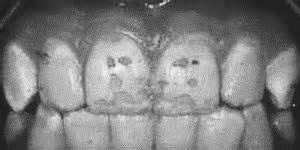
And when EPA proclaims that children’s teeth that are brown, cracked, chipped, and pitted are only cosmetic defects, and that the only adverse health effect from fluoride overdosing is skeletal fluorosis (or death from swallowing a big dose), and that telling the truth about the carcinogenicity of fluoride is an offense for which an EPA scientist should lose his job, and it does all this to continue the fiction that toxic sludge in drinking water is good for you – we take action.
We recognize that our duty to “preserve, protect and defend the Constitution of the United States against all enemies, foreign and domestic” extends to not acquiescing in having our work used for cover in such ethical catastrophes as these.
In confronting our consciences, we chose not to rely on the defense that failed at Nuremberg.
It is for these ideals that we organized and for which we have fought and for which we will continue to fight.
ROSTER OF OFFICERS
Those who have served as officers of the union are grouped by office. Following the names of each person is the year in which that person began his or her term in that office. Before 1985, we had not established terms of office under a constitution. Thus, persons elected to office in 1983, immediately after we were chartered by the National federation of Federal Employees, served until the elections held in mid 1985. In 1996, we did away with the office of President-Elect, re-titling that office as Executive Vice-President, and no automatic succession to the office of President was associated with the Executive Vice-President position. All officers served one-year terms in office. Presidents could not succeed themselves. There were no elections in 1995 during our period of trusteeship. The Senior Vice-President is elected by the Executive Board from among the roster of Vice-Presidents.
PRESIDENTS
William Coniglio 1983, 1985, 1987
Robert Carton 1986, 1989
William Hirzy 1988, 1990, 1993
Dwight Welch 1991, 1994, 1997, 1999
Tyrone Aiken 1992
James Murphy 1996, 1998
PRESIDENTS-ELECT (OR EXEC. V.P.)
William Coniglio 1986
Robert Carton 1985, 1988
William Hirzy 1987, 1989, 1992
Dwight Welch 1990, 1993, 1998
Tyrone Aiken 1991
Myra Cypser 1991
CHIEF STEWARDS
Rufus Morison 1985, 1987, 1990, 1991, 1992
Marc Turgeon 1986
Eleanor Zimmerman 1988
Hale Vandermer 1989
Steven Spiegel 1993, 1994
Dwight Welch 1996
Patricia Sims 1997
Rosezella Canty-Letsome 1997, 1998, 1999
TREASURERS
William Marcus 1983, 1986, 1990, 1991, 1992
Patricia Hilgard 1985
Morris Blumenfeld 1987
Daljit Sawhney 1988, 1989
Bernard Schneider
SECRETARIES
Mark Antell 1983, 1985, 1986
Robert Carton 1987
Francine Ten Eyck 1989
Myra Cypser 1989
Laura Sallman-Smith 1990
James Handley 1991, 1992
Patricia Sims 1993
Richard Emory 1994
Anne Leslie 1996
Julie Simpson 1997, 1998, 1999
SENIOR VICE-PRESIDENTS
William Hirzy 1985, 1994, 1996, 1997, 1998, 1999
Rufus Morison 1986, 1988, 1989
Lois Dicker 1987
Robert Carton 1990, 1991
Dwight Welch 1992, 1994
James Handley 1993
VICE-PRESIDENTS
Doreen Cantor 1983
Norman Whalen 1983
Robert Carton (see above for Senior Vice-President terms) 1983
William Marcus 1985
Lois Dicker 1985, 1986, 1987
Alejandro Arce 1985, 1992, 1994
Donald Rodier 1985
Irvin Mauer 1985, 1986, 1989, 1993
William Hirzy (see above for Senior Vice-President terms) 1986
David Ritter 1986, 1987, 1988
Marc Turgeon 1986, 1987
Salvatore Biscardi 1987, 1989
Krystina Locke 1987
Raymond Locke 1988
James Murphy 1988, 1989, 1990, 1991, 1992
Charles Garlow 1988
Dwight Welch (see above for Senior Vice-President terms) 1989
Rufus Morison (see above for Senior Vice-President terms) 1989, 1993
Hale Vandermer 1990
Myra Cypser 1990
Sherry Milan 1990
James Walker 1990, 1991
James Handley (see above for Senior Vice-President term)1994
Elbert Dage 1991, 1992
Bernard Schneider 1992
Otto Gutenson 1993, 1994
Freshteh Toghrol 1993, 1994, 1995, 1996, 1997, 1998, 1999
Barbara Pringle 1993
Alex Varela 1993
Eric Jackson 1994
Anne Leslie 1994
Arthur Chiu 1997, 1998, 1999
William Garetz 1997, 1998, 1999
Martha Price 1996, 1997, 1998
Jeff Beaubier 1996, 1997, 1998
James Goodyear 1998
Richard Nalesnik 1999
Linda Martin 1999
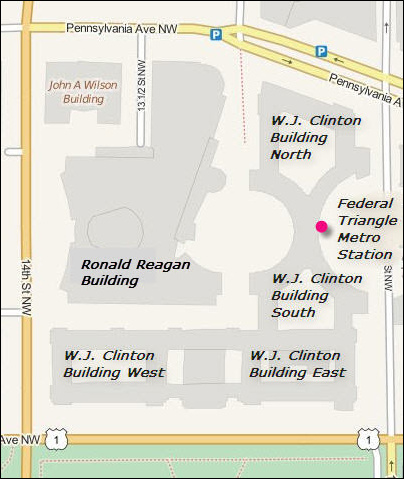
National Treasury Employees Union Chapter 280 (U.S. EPA HQ), DC Office
1201 Constitution Avenue, Northwest, William Jefferson Clinton East Building, Room 3376, Mail Code UN200-T, Washington, DC 20004 / v: 202.566.2786 / f: 202.566.1460
Information on original NTEU 280 History page, no longer online, the source of our article on the history of the EPA Headquarters Professionals Union:
NTEU CHAPTER 280 – U.S. ENVIRONMENTAL PROTECTION AGENCY, NATIONAL HEADQUARTERS / BEN FRANKLIN STATION, BOX 7672, WASHINGTON D.C. 20044 – PHONE 202-566-2789 / INTERNET http://www.nteu280.org / E MAIL Al-Mudallal.Amer@epa.gov / DESCRIPTION / NEWSLETTER / CURRENT ISSUES / PRESS RELEASES / LINKS / MEMBERS PAGE HISTORY SITE INDEX / http://www.nteu280.org/history.htm [Website and email still working, but content is new; Other links are defunct (2016-06-12).
Link to new NTEU History page: http://nteu280.org/history/ ]
